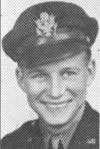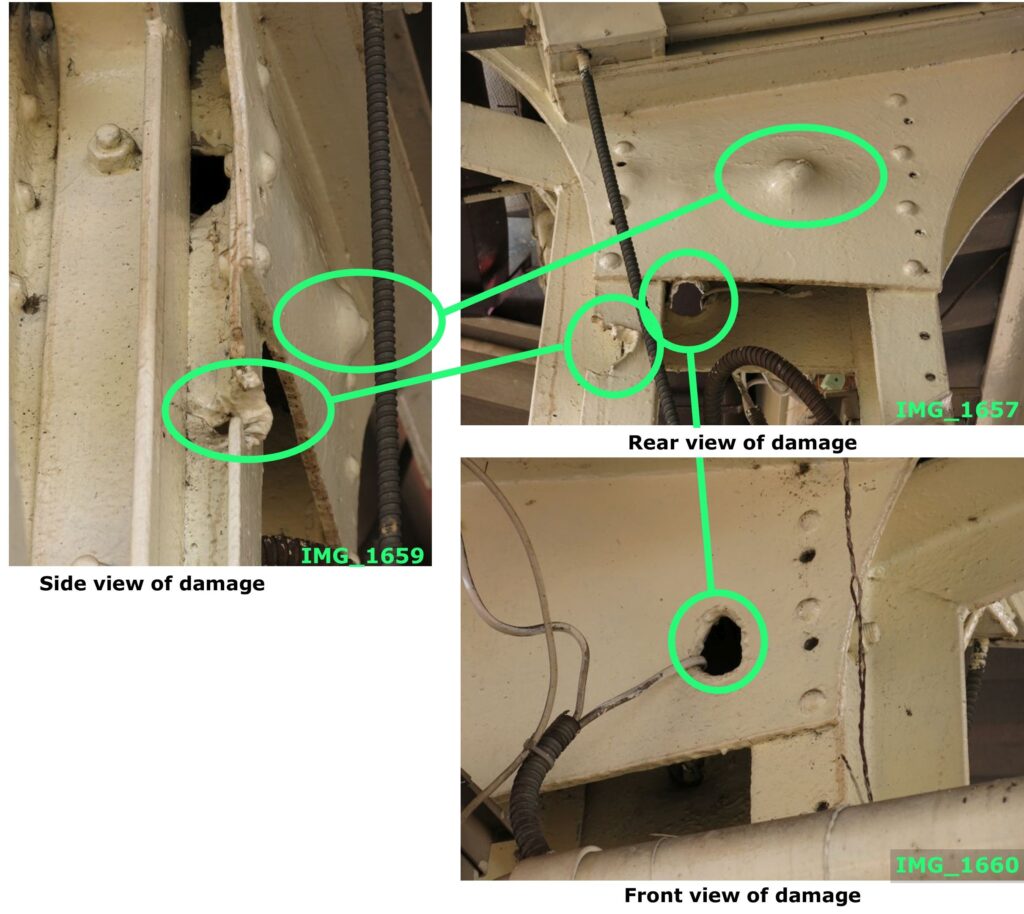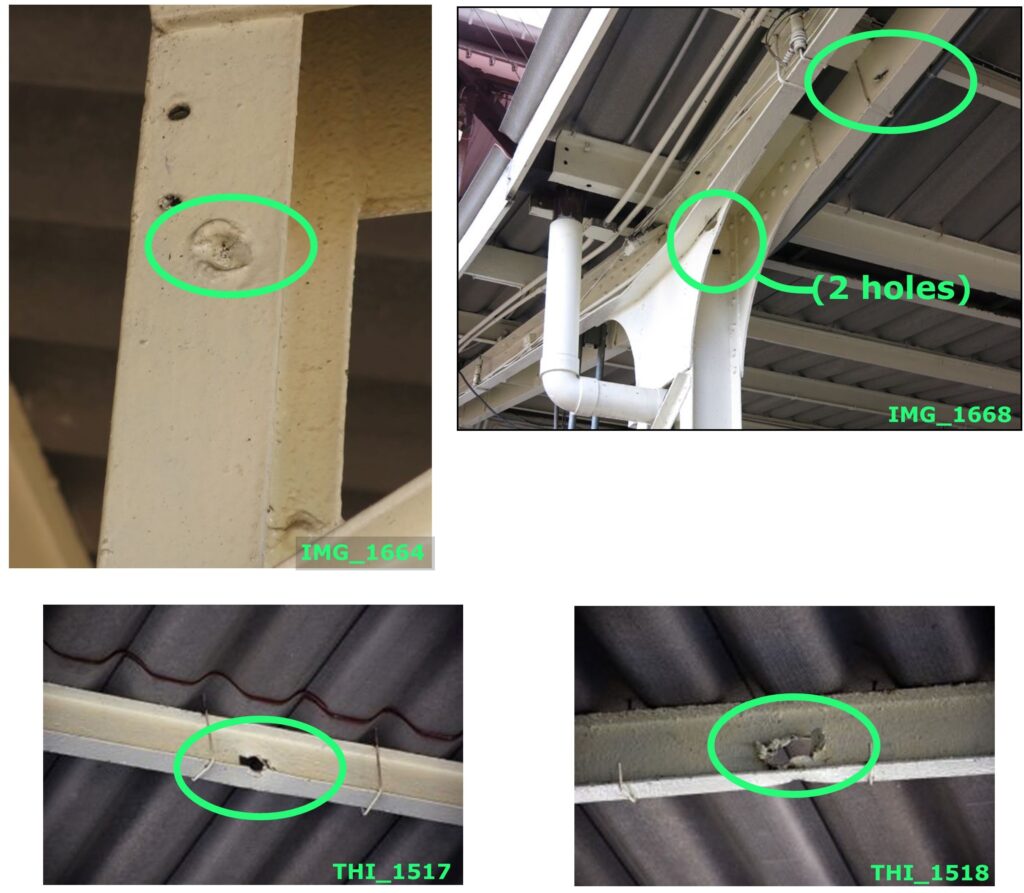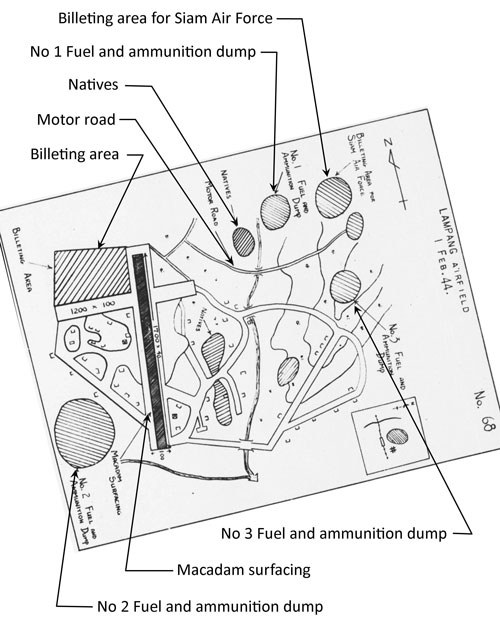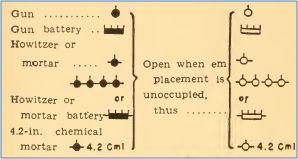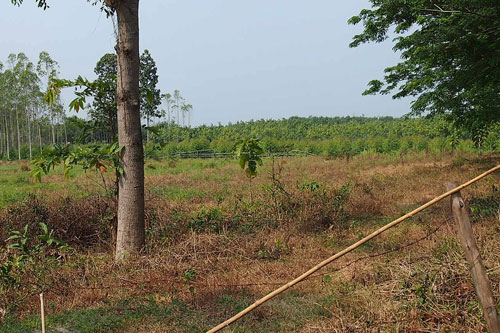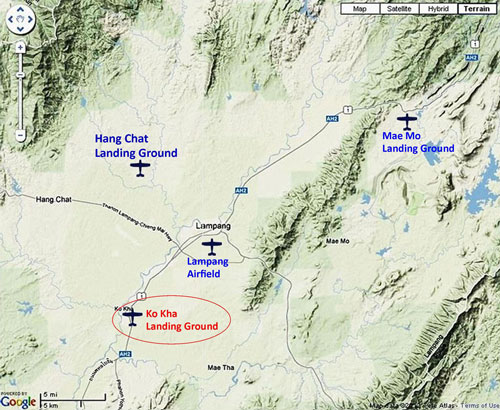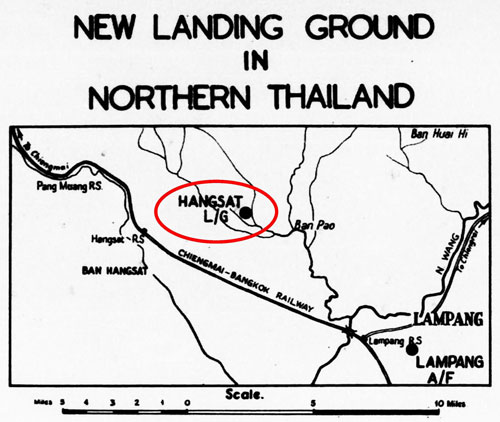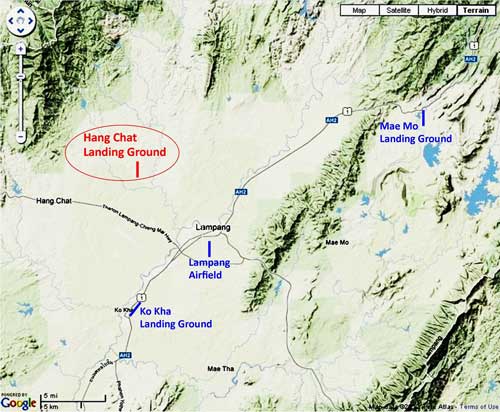CASUALTIES (in chronological order)
FRANKLIN H MCKINNEY 05 November 1944
 His crash site has been located and is currently under investigation by the US Defense POW/MIA Accounting Agency (DPAA).
His crash site has been located and is currently under investigation by the US Defense POW/MIA Accounting Agency (DPAA).
See USAAF P-38 crashed at Mae Kua; Franklin McKinney killed for current information.1
HENRY F MINCO 11 November 1944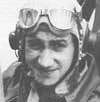
His crash site has been located and is currently under investigation by the US Defense POW/MIA Accounting Agency (DPAA). See USAAF P-51 crashed near Lampang; Henry Minco killed for current information.2
WAS SOONTARAKOMAN 11 NOVEMBER 1944
 RTAF histories record five fighters, from RTAF Fighter Squadron 16 of Combined Wing 80 based at Lampang, combating Allied attacking aircraft with all Thai aircraft downed in and around Lampang, and one RTAF pilot killed.3 The dead pilot was identified as วาสน์ สุนทรโกมล, which transliterates roughly as Was Soontarakoman:4
RTAF histories record five fighters, from RTAF Fighter Squadron 16 of Combined Wing 80 based at Lampang, combating Allied attacking aircraft with all Thai aircraft downed in and around Lampang, and one RTAF pilot killed.3 The dead pilot was identified as วาสน์ สุนทรโกมล, which transliterates roughly as Was Soontarakoman:4
Was’s Ki-27 was hit around 1700 during one of the five dogfights over Lampang that day and caught fire; he was severely burned before parachuting and rescuers took him to hospital where he died around 2200 hrs.5
He was one of two pilots identified in the RTAF history of WW2 as shooting down P‑51s on this date;6 however, USAAF records show only one aircraft, that piloted by Minco (see above article), as lost during that mission.7
While RTAF histories record the air encounter over Lampang and his death on 17 November 1944,8 the numerous Allied documents cited here on associated activities state the 11 November date and the latter is assumed correct. The date was corrected to 11 November 1944 in the more recently published history of the RTAF during the war.9
THOMAS R ANKRIM 07 December 1944
Thomas R Ankrim clipped a tree on a strafing run and crashed in southern Shan State, just north of the border with Thailand. His remains have never been recovered. Ankrim’s family erected a memorial in Chestnut Level Presbyterian Cemetery (offsite link), Drumore Township, Lancaster County, Pennsylvania. No “missing air crew report” (MACR) has been found for this event. In response to a query as to how often “missing crew reports” are not filed, Accireport responded:
Missing Air crew reports [began] in May/June 1943, so with the exception of some reports made months or years after the incidents, there are no reports for most before that period. After May/June 1943, there are reports for most losses in which crew members were not accounted for, but some were still overlooked or omitted. Reports for accidents and missing air crew in the Pacific areas were hit and miss, [and while] there were far fewer incidents, far more went unreported.10
and
It is very common to [learn only later of unlisted service personnel not recovered]. Hundreds of airplanes crashed into the Atlantic, Pacific, English Channel, North Sea, and swamps and jungles all over the world.11
For 07-08 December 1944, neither the USAAF chronology12 nor Air War Pacific Chronology13 records action in the area of his crash. A USAAF mission report for that date did locate his crash in Burma just across from Mae Sai, Thailand.14
Postscript
As noted on the first page about Lampang, its location was judged important by Thai, and then Japanese, because of its direct rail connection from the port of Bangkok in the south and its road connection further north to Kengtung (Google Maps link) in Shan State; and particularly for the Japanese as it planned to invade India, the access afforded from Kengtung on west to Mandalay (Google Maps link) in Burma. Lampang’s strategic significance was noted by Allied intelligence and became a regular target of Allied aircraft. The following lists Allied attacks on Northwest Thailand, even if Lampang was not specifically named, because the relative mobility of aircraft allowed easy access to the town if in the area:
20 Nov 1943: 308th Bomber Group bombed Chiang Mai and Lampang Airfields. (Young:201)
21 Dec 1943: 29-14th AF B-24 bombers bombed Chiang Mai station at 1500 – nearly wiping out station yard. Station building and cargo depots were damaged beyond repair – 300 people were killed. (2bangkok blog: WWII bombardment of Thai railways: Wisarut post 57, 30-10-08, 02:40 PM)15
21 Dec 1943: (14AF): 29 B-24’s pound the railroad yards at Chiang Mai; the warehouse area along the W side of the yards suffers very heavy damage. (USAAF Chrono)
21 Dec 1943: Thailand: Twenty-nine 308th Heavy Bombardment Group B-24s attack rail facilities at [Chiang Mai]. (Hammel:8915-8916)
31 Dec 1943: 308th Squadron B-24 bombers from Chongqing bombed Lampang Station – damaging the yard, but main station building was left intact. RTAF 16 Squadron 16 (Lampang) were scrambled to oppose the B-24s but the B-24 refused to engage. [308 Squadron ref is unclear] (2bangkok blog: WWII bombardment of Thai railways: Wisarut post 57, 30-10-08, 02:40 PM)15
31 Dec 1943: (14AF): 25 B-24s pound the Lampang railroad yards, causing several big fires and many secondary explosions. . . . (USAAF Chrono)
31 Dec 1943: Thailand: Twenty-five 308th Heavy Bombardment Group B-24s attack rail facilities at Lampang. (Hammel:9141-9142)
01 Jan 1944: B24s attacked Lampang (Wisarut in axishistory forum: “Bombing of Southeast Asia”, Post 2, 14-07-2010, 21:15 (offsite link)
03 Jan 1944: (14AF): 28 B-24’s attack the railroad yards at Lampang. (USAAF Chrono). Wisarut records many homes destroyed (Wisarut: ibid)
05 Mar 1944: 8 B-25 bombers bomb [Chiang Mai] Airport, damaging 9 fighter planes; bombed Chiang Mai and [Yang Loang (Saraphi)] stations. also damaged Fort Kawila area. (Wisarut in 2bangkok blog: “WWII bombardment of Thai railways” post 58 30-10-08, 03:02 PM)15
05 Mar 1944: (14AF) 8 B-25s bomb and strafe [Chiang Mai] Airfield, destroying 9 aircraft, the water tower and nearby railroad station; barracks area is also damaged. (USAAF Chrono)
05 Mar 1944: Thailand: Eight 341st Medium Bombardment Group B-25s attacked [Chiang Mai] Airdrome. (Hammel:10618)
14 Mar 1944: Four RAF 211 Squadron Beaufighters flying out of Broadway, Burma, attacked Chiang Mai airfield. (Shores-3:181)
Brown identifies these four as from RAF 177 Squadron. (Brown:104)
08 Apr 1944: Four RAF 211 Squadron Beaufighters flying out of Broadway, Burma attacked Chiang Mai rail sidings. A Thai Air Force Curtiss Hawk III biplane fighter was shot down, with pilot seen to bale out. (Shores-3:202)
10 Apr 1944: “Returning to Ramu at night on 10 April from an attack on Chiengmai . . . .” [Squadron 211] (Haakenson)
23 Apr 1944: 2 P-38s strafed Army trucks and Fort Kawila area [Chiang Mai]. (Wisarut in 2bangkok blog: “WWII bombardment of Thai railways” post 58 30-10-08, 03:02 PM)15
23 Apr 1944: (14AF) 2 P-38s hit truck convoy and barracks S of Chiang Mai. (USAAF Chrono)
23 Apr 1944: Two 449th Fighter Squadron P-38s attacked barracks and a truck convoy near [Chiang Mai]. (Hammel:p351)
24 Apr 1944: Ban Dara bridge was made inoperable as result of Allied bombing (Wisarut in axishistory forum: “Bombing of Southeast Asia”, post 2, 14-07-2010 12:20 (offsite link)
28 Sep 1944: Two 69th Composite Wing P-38s strafed targets between Ban Dara and Lampang (Jackson: Ch16)
11 Nov 1944: Nine 25th Squadron P-51s and eight P-38s strafed Lampang AFB, Lampang – Chiang Mai railway line, and Ban Dara Bridge. One RTAF plane and one SLM loco damaged [25th Squadron ref unclear] (Wisarut in 2bangkok blog: “WWII bombardment of Thai railways”, post 58, 30-10-08, 03:02 PM)15
11 Nov 1944: Five RTAF Ki-43 (Ota) fighters engaged the P-51 and P-38 fighters. One P-38 was shot down with loss of pilot, but all five Ki-43 (Ota) fighters were shot down, with Thai pilot, Master Sgt Nat Sunthorn, later dying. (Young:205)
11 Nov 1944: (14AF): 70+ P-40s, P-51s and P-38s over S China and N Indochina on armed reconnaissance hit targets of opportunity at several locations, concentrating on Lampang, Thailand [and China]. (USAAF Chrono)
13 Nov 1944: At least 60 P-38s, P-40s, and P-51s from China searched China, Burma, Thailand for targets to bomb, ie, military bases and railway lines. (Wisarut in 2bangkok blog: “WWII bombardment of Thai railways”, post 58, 30-10-08, 03:02 PM)15
13 Nov 1944: (14AF): . . . 60+ P-40s, P-51s, and P-38s on armed reconnaissance over S China and as far W and SW as Burma and Thailand hit numerous targets of opportunity including shipping, troops, and railroad targets. (USAAF Chrono)
13 Nov 1944: CBI: More than 60 14th AF fighter-bombers attacked shipping, troops, rail targets, and targets of opportunity in southern China, Burma, and Thailand. (Hammel:16202-16203)
14 Nov 1944: 12 Beaufighters attacked enemy communication lines in Chiang Mai-Lampang area. . . . (A8202:p0356)
24-30 Nov 1944: EAC attacked bridges along Bangkok-Chiang Mai railway; rail targets along Chiang Mai-Lampang railroad. (A8202:p0331)
24 Nov 1944: 15 Liberators dropped 39 tons of bombs over locomotive sheds in the Chiang Mai-Lampang area causing large fires. (A8202:p0339)
24 Nov 1944: Armed Mustangs strafed, damaged locomotive during recon of Lampang-Ban Dara section of RR. (A8044:0270)
25 Nov 1944: (14AF): 75 P-40s, P-51s, and P-38s doing armed recon attacked river, road, and rail traffic, troops, buildings, and other targets of opportunity at several Thailand, Burma, S China, and N French Indochina locations, including areas around [Phrae] and Lampang, Thailand. (USAAF Chrono)
25 Nov 1944: China: Seventy-five 14th AF fighter-bombers attacked rail, river, and road traffic, and troops, buildings, and targets of opportunity in southern China, eastern Burma, northern French Indochina, and Thailand. (Hammel:p503)
27 Nov 1944 (14AF): 56 P-40s, P-51s, and P-38s doing armed recon over E Burma, N French Indochina, and S China attack town areas, railroad targets, bridges and other targets of opportunity around Lampang, Thailand . . . (USAAF Chrono)
27 Nov 1944: Thailand AREA: 15 B-24s dropped 39 tons bombs on [locomotive] sheds – [Chiang Mai]-Lampang area causing large fires. Meager and inaccurate light AA encountered . . . . (USAAF “Summary” [USAAF Archive Reel A8202 p 339])
27 Nov 1944: . . . 14th AF fighter-bombers attacked Lampang. (Hammel:p505)
28 Nov 1944: 24 Beaufighters bombed Chiang Mai, destroying a steamroller (A8202:p0338)
30 Nov 1944: (14AF): Nine fighter-bombers hit shipping, rail targets, and troops at various points in Thailand. . . . (USAAF Chrono)
30 Nov 1944: Thailand: Nine 14th AF fighter-bombers attacked troops, shipping, and rail targets in Thailand. (Hammel:p507)
12 Dec 1944: P-38 fighters and recon fleet strafed and bombed railway lines and roads in Burma and Chiang Mai. (Wisarut in 2bangkok blog: “WWII bombardment of Thai railways”, post 58 30-10-08, 03:02 PM)
12 Dec 1944: (14AF): 50+ P-40s, P-51s, and P-38s on armed reconnaissance attack many targets of opportunity including town areas, road and rail traffic, and supplies at or near Wan Pa-Hsa, Burma, [Chiang Mai], Thailand . . . (USAAF Chrono)
12 Dec 1944: 14th AF fighter-bombers attacked [Chiang Mai]. (Hammel: 16933-16934)
13 Dec 1944: P-38 and P-51 fighters strafed bridges around Chiang Mai. (Wisarut in 2bangkok blog: “WWII bombardment of Thai railways”, post 58 30-10-08, 03:02 PM15
13 Dec 1944: (14AF): 24 P-51s and P-38s hit the town of Bac Ninh and the rail yards at Phu Lang Thuong, French Indochina, and damage a bridge at [Chiang Mai], Thailand. (USAAF Chrono)
13 Dec 1944: 14th AF fighter-bombers attacked a bridge at [Chiang Mai]. (Hammel:p518)
26 Dec 1944: (14AF): 46 P-51s, P-38s, and P-40s hit railroad targets, shipping, storage and other targets of opportunity in China; Lampang, Thailand . . . (USAAF Chrono)
26 Dec 1944: 14th AF fighter-bombers attacked Lampang. (Hammel:17340-17341)
07 Feb 1945: The Allied air campaign continued to concentrate on disrupting the Japanese communications network and choking off the flow of supplies into Burma. . . . attacks continued on the Bangkok-Chiang Mai rail line . . . The Allied bombing raids into Thailand took place every few days as the RAF and USAAF continued to knock out key rail bridges and damage marshaling yards. . . . RAF long-range fighters kept up steady attacks on rolling stock and motor transport. Pairs of RAF Beaufighters flew regular patrols over northern Thailand, strafing locomotives, railroad cars, and whatever trucks could be found along the roads. Most of these missions resulted in only a few trucks destroyed, but the Beaufighters occasionally came across a more lucrative target, as on February 7, when two Beaufighters came across 42 rail cars on the Chiang Mai-Lampang rail line and destroyed 12. (Young:211-212)
20 Mar 1945: Fighter squadrons (assume with the “usual” P-38s, P-40s, and P-51s) of the 2nd Air Commando Group flew to northern Thailand to strafe fields at Chiang Mai and Phrae. A civilian Fairchild 24 of Aerial Transport Company was shot down near Chiang Mai. (Shores-3:342)
22 Mar 1945: 34 fighters swept airfield at Chiang Mai, causing fires; 1 IJAAF passenger plane shot down. (A8202:p0183)
10 Apr 1945: 115 fighters struck various locations, including Chiang Mai. (A8202:p0158)
12 Apr 1945: 117 fighters struck various locations, including Chiang Mai. (A8202:p0151)
27 May 1945: 11 fighters dropped six tons of bombs on Chiang Mai and Lampang airfields. (A8202:p0095)
28 May 1945: Seven fighters dropped three tons of bombs on Chiang Mai airport.(A8202:p0096)
Abbreviations for references in parentheses in this section:
• A8202, A8044: US Archive microfilm reels A8202 & A8044
• Ford: Ford, Daniel, Flying Tigers: Claire Chennault and his American Volunteers, 1941-1942, updated edition (Washington: Smithsonian, 2007)
• Frances, Neil, Ketchil: A New Zealand pilot’s war in Asia and the Pacific (Auckland: Publishing Press, 2005)
• Haakenson: “211 Squadron: J12845 Flight Lieutenant Malfred Johan Carl Haakenson 1919—2006”
• Hammel: Hammel, Eric, Air War Pacific Chronology (Pacifica CA: Pacifica Military History, 1998) (e-book)
• Hammel: Hammel, Eric, Air War Pacific Chronology (Pacifica CA: Pacifica Military History, 1998) (book)
• Jackson, Daniel, book in process of publication.
• Jefford, CG, The Flying Camels: The History of 45 Squadron RAF (Jefford: 1995) ISBN: 0 9526290 0 3 (by reference of Neil Francis).
• RAF Squadrons 177: RAF Squadrons: 177 Squadron
• Shores-1: Shores, Christopher et al, Bloody Shambles, Vol I, The Drift to War to the Fall of Singapore (London: Grub Street, 2002)
• Shores-2: Shores, Christopher, Bloody Shambles, Vol II, The Complete Account of the Air War in the Far East (London: Grub Street, 2002)
• Shores-3: Shores, Christopher, Air War for Burma, Vol III, The Allied Air Forces Fight Back in South East Asia (London: Grub Street, 2005)
• USAAF Chrono: The Official Chronology of the U.S. Army Airforce in World War II
• Wisarut: references are taken from Internet forums, 2bangkok and axishistory.
• Young: Young, Edward M, Aerial Nationalism (Washington: Smithsonian, 1995)
A video of one bombing of Lampang is available on Facebook (offsite link). Its accompanying text is Google translated here:16
Lampang Province . . . on December 31, 1943 and January 3, 1944, was the bombing of Lampang Airport and Nakhon Lampang Railway Station (according to the record in The Axis Air Forces by Frank Joseph, there is an attempt to intercept the flight of Thai pilots of the 16th Fighter Squadron). In this clip, it can be seen that Lampang City was carpet-bombed by Allied B-24 aircraft covering a wide area, including residential areas. Sourcing an article in Wikipedia no longer available, it state that that during World War II, in Lampang Province, Japan seized buildings and businesses of Westerners, including British, Americans, and other nationalities, who fled.
At that time, Thailand was at war with the Allies, so the town was bombed by the Allies. Many families in the city temporarily moved away to escape the war. Some shops in the town disguised their buildings with coconut tops or painted their buildings black. The Japanese soldiers seized important buildings, especially the shops in the Kad Kong Ta (Google Maps link) area, and even seized Khuang Polo (currently Khelang Nakhon Public Park) and the area of the Tip Chang Hotel, which was the headquarters of the Japanese 1st Division. Meanwhile, buildings belonging to the warring groups, such as the British and Americans, such as Vansantvoord Hospital Hospital and Kenneth McKenzie School, were seized and used as bases for Japanese soldiers. Even at Wat Nam Lom, there was a story that Japanese tank soldiers came to stay at the temple. As a result, the residential areas of the people in Lampang city became the target of bombing by the Allies.
The Allied attacks resulted in significant damage to the airfield and railway yard facilities, but apparently not the Lampang Railway Station structure (unlike that at Chiang Mai which was destroyed by bombing). A key target for the Allies must have been the railway bridge, the “Black Bridge”, across the Wang River, but it was never disabled. While it may have been damaged, railway employees were able to repair it and it continued in operation to be replaced only in 1964 as a part of a project to increase the capacity of the railway in that area from 10.5 to 15 tons per axle.17
Mark Robinson, maintaining the YouTube Channel Series, State Railway of Thailand (offsite link), in viewing the roof of Platform 1 at Lampang Railway Station:18
noted damage still visible from WW219 and commented:
. . . at the time there would have been shrapnel flying in all directions, but . . . the damage was done from objects flying from the direction of the Wang River bridge [as well] as the original maintenance yards . . . . [and] you don’t know what the shrapnel had hit, and gone through before hitting the station building, to reduce its velocity [producing the damage that we see]
Here are three views of one bit of damage (click to enlarge):20
A closer inspection of the plate visible in IMG_1857 and IMG_1859 will reveal lesser “dimples”, probably from the fragmentation of the shrapnel as it passed through the plate in IMG_1660.
And more evidence of damage here (click to enlarge):21
In IMG_1664, Marks points out that the missile had probably already bounced around and lost much of its kinetic energy before hitting the beam, hence its failure to penetrate, and leaving a crater. He believes that some of the holes in IMG_1668 could have been from either bullets or shrapnel.
- Photo provided by Dan Jackson.[↩]
- Photo provided by Mike Roberts author of “Fallen Tiger”, Cleveland Magazine, June 2004 Internet copy: no page number[↩]
- RTAF 1913-1983, p 330 and RTAF WW2, pp 164-165.[↩]
- Young (p 205) identified the pilot as CWO Nat Sunthorn, apparently an example of how transliterations from Thai can vary). The transliteration of his name that comes closer is Was Soontarakoman.[↩]
- Picture and information from รัตนชัย, สักดิ์, ปาะวัติศาสต์ศึกษายุทธเวหาลำปาง [Rattanachai, Saksern S, Aircraft History of Lampang (Lampang: (self-published), undated)], Ch 59, page 103. Additional information from Kamrobe.[↩]
- RTAF WW2, p 165[↩]
- USAAF 25th Fighter Squadron of the 51st Fighter Group, Mission Report FN-1211 of 11 Nov 1944 (provided by Dan Jackson email of 0201 23 Sep 2018).[↩]
- RTAF 1913-1983, p 330 and RTAF WW2, pp 164-165. The difference is probably the result of the similarity of 1 and 7 in written Thai: the 1 is not “crossed” while the 7 is.[↩]
- ประว้ติกองท้พอากาส ในสงครามมหาเอเชียบูรพา ระหว่าง พ.ศ.-๒๔๘๔-๒๔๘๘ จ้ดพิมพ์เป็นที่ระลืก ในโอกาส ๘๐ ปี สดุดีวีรชนสงครามมหาเอเชียบูรพา ๘ ธ้นวาคม ๒๔๘๔ (นครราชสีมา: สมบูรณ์การพิมพ์, พ.ศ.๒๕๖๔ [History of the Royal Thai Air Force In the Great East Asia War Between 1941-1945 (Nakhon Ratchasima: Somboon Printing, 2021)], p 249[↩]
- Accireport email dated 1753 hrs 08 Nov 2012.[↩]
- Accireport email dated 2157 hrs 21 Apr 2009.[↩]
- Kit C. Carter & Robert Mueller, compilers, The Official Chronology of the US Army Airforce in World War II: 1941-1945 (Washington: Center for Air Force History, 1991), unpaginated[↩]
- Eric Hammel, Air War Pacific (Kindle: Pacifica Military History, 1998), unpaginated[↩]
- USAAF 25th Fighter Squadron of the 51st Fighter Group, Mission Report F-1363 of 07 Dec 1944 (provided by Dan Jackson email of 1314 22 Sep 2018).[↩]
- link no longer available after the 2Bangkok Forums were hacked and never properly restored[↩][↩][↩][↩][↩][↩][↩]
- information was attributed to Wikipedia, Lampang Province #WorldWarII, but is no longer available on Wikipedia[↩]
- Wisarut Bholsithi comm of 12 Sep 2018[↩]
- Mark Robinson photo IMG_1661 of 24 Sep 2018[↩]
- Mark Robinson email, 16:25 05 Nov 2018[↩]
- photos as numbered from Mark Robinson and annotated by author using Microsoft Publisher.[↩]
- with THI-prefixed photos added by Mark Robinson email, 09:58 10 Nov 2018, all annotated by author using Microsoft Publisher.[↩]
